Taito Ward Tokyo, one of the city’s smallest districts, offers a rare mix of historic charm and relaxed urban living. Located near the heart of the capital, it’s known for iconic spots like Senso-ji Temple and the nostalgic Yanaka neighborhood.
Unlike the fast-paced vibe of Shibuya or the modern towers of Minato, Taito moves at a gentler rhythm, perfect for those who appreciate tradition and community. It’s also a pet-friendly area, making it a great choice for dog owners looking for quiet streets and green spaces.
Where is Taito Ward in Tokyo?
Situated in northeastern Tokyo, Taito Ward is strategically positioned next to Sumida, Chiyoda, and Bunkyo, making it a well-connected area within the capital. Despite being one of Tokyo’s smallest administrative districts in terms of land area, Taito is remarkably rich in historical depth and urban character. It proudly contains some of the most recognizable neighborhoods in the city, such as Asakusa, Ueno, and Yanaka, each renowned for offering a unique local experience.
From ancient temples and traditional shopping streets to sprawling parks and preserved townscapes, the ward presents a tapestry of experiences that reflect both the legacy and evolving identity of Tokyo. Whether you’re exploring centuries-old architecture or enjoying the daily rhythms of neighborhood life, Taito delivers a cultural immersion unlike any other part of the metropolis.
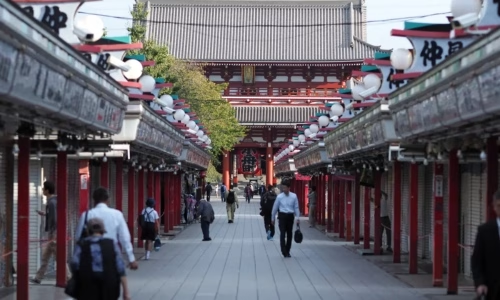
Top Attractions Around Taito Ward
Taito Ward is a treasure trove of cultural landmarks and scenic areas, offering a diverse range of attractions that appeal to both history buffs and casual travelers. From iconic temples to quiet backstreets, the ward captures the spirit of traditional Tokyo while remaining accessible and engaging.
Ueno – A Hub of Museums and Green Spaces
At the heart of Ueno lies Ueno Park, a sprawling green space known not only for its seasonal beauty but also for its wealth of artistic and educational institutions. This area houses renowned destinations such as the Tokyo National Museum, National Museum of Nature and Science, and the National Museum of Western Art, each showcasing invaluable collections that span centuries and continents.
Families and visitors also flock to Ueno Zoo, Japan’s oldest zoological garden, which continues to delight children and animal lovers alike. In spring, Ueno Park transforms into one of Tokyo’s most iconic cherry blossom viewing spots, attracting thousands for hanami picnics under a canopy of pink petals. The park’s open layout and rich cultural presence make it a must-visit destination for anyone exploring eastern Tokyo.
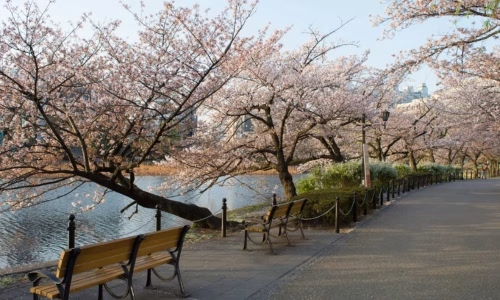
Asakusa – Tokyo’s Heritage Preserved
Asakusa is perhaps Taito Ward’s most internationally recognized neighborhood. Its crown jewel, Senso-ji Temple, is Tokyo’s oldest Buddhist temple and a symbol of spiritual and architectural heritage. The temple grounds buzz with energy year-round, especially during major festivals like Sanja Matsuri.
Leading up to the temple is Nakamise-dori, a lively pedestrian street lined with vendors selling everything from hand-crafted souvenirs to age-old snacks like ningyo-yaki and senbei. Visitors can also rent traditional yukata or kimono for a more immersive cultural experience as they walk through the historic streets. With its blend of sacred tradition and vibrant commerce, Asakusa embodies the enduring charm of old Tokyo.
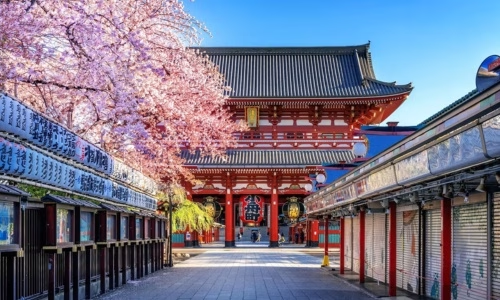
Yanaka – Tokyo’s Timeless Corner
In contrast to the busier tourist areas, Yanaka offers a slower, more introspective journey into Tokyo’s past. Remarkably spared from bombings during World War II, Yanaka has retained much of its pre-war charm. Here, narrow stone-paved alleys lead to timeworn wooden houses, artisan workshops, and quiet cafés hidden away from the city’s fast pace.
The neighborhood is also known for Yanaka Cemetery, a serene place filled with historical graves, shady paths, and a tranquil atmosphere, especially during sakura season. Art galleries, handmade goods stores, and community events reinforce the strong local character of Yanaka, making it an ideal destination for those seeking authenticity and peace in the heart of Tokyo.
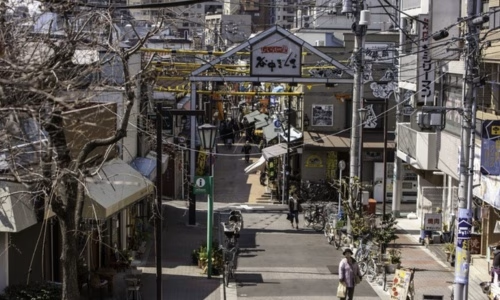
What It’s Like to Live in Taito Ward
A Calm Yet Lively Atmosphere
Living in Taito Ward offers a refreshing contrast to Tokyo’s fast-paced urban core. The district feels calm but never dull, combining local identity with a lifestyle rooted in everyday simplicity. Unlike the hyper-modern landscapes of Shibuya or Roppongi, the rhythm here is slower, making it ideal for those who value tradition, walkable streets, and a human scale of city life.
Community and Traditions
One of Taito’s defining qualities is its close-knit community. Generations of families continue to live here, keeping customs and festivals alive. Behind lively commercial zones, quiet residential streets provide peaceful retreats while still being steps away from major landmarks.
Daily Convenience and Local Charm
Ameyoko Market near Ueno Station illustrates the district’s energy. The bustling corridor is filled with stalls selling fresh seafood, clothing, international groceries, and street food. Shoppers can haggle, snack, and immerse themselves in authentic Tokyo street culture.
Wander further into Asakusa or Yanaka and the pace changes. Family-run restaurants, retro kissaten, and traditional bakeries serve dishes made from recipes passed down for generations. These places are more than just eateries—they function as community hubs where owners greet customers by name and every meal comes with a story.
Balance Between Tourism and Everyday Life
Although Taito attracts visitors with its iconic landmarks, the ward maintains a strong residential character. Apartments, row houses, and traditional homes sit beside schools, temples, clinics, and local parks. This mix creates a balanced environment, offering cultural highlights without the chaos of heavily commercialized districts.
A Place to Belong
Students, artists, remote workers, and retirees all find a welcoming atmosphere here. For many, Taito is not just a destination but a place that feels like home.
Housing in Taito: Renting and Buying Options
Taito Ward offers a rare balance of affordability and centrality, perfect for those seeking a place to live in Tokyo without the high costs typically associated with the city’s core. Its excellent public transport connections, especially around major stations like Ueno, make it easy to commute while enjoying a quieter, more grounded lifestyle.
Compared to upscale areas like Minato, Shibuya, or Chiyoda, Taito stands out for its reasonable property prices:
- Rental prices for studio or 1LDK apartments typically range from ¥70,000 to ¥130,000 per month.
- Larger units, such as 2-bedroom apartments, generally start around ¥150,000 and can go up to ¥250,000 per month, depending on location, building age, and amenities.
- If you’re considering purchasing property, condominiums in Taito average between ¥700,000 and ¥1,000,000 per square meter, making it more affordable than many central districts.
Common Housing Types in Taito Include:
- Modern Apartments (Mansions): These concrete buildings often feature secure entrances, elevators, balconies, and updated interiors. Perfect for individuals, partners, or young families.
- Traditional Japanese Houses (Kominka): For those seeking authenticity and a deeper cultural experience, these older wooden homes offer tatami floors, sliding doors, and a nostalgic atmosphere.
- Compact Units (1K, 1LDK): Designed for students, solo residents, or expatriates staying long-term, these apartments offer comfort, convenience, and manageable monthly expenses.
Taito’s housing market attracts a broad audience, from locals looking to live in culturally rich neighborhoods, to foreigners interested in immersive, community-based living. Whether you’re renting short-term or investing in a long-term home, this ward provides both value and character.
Renting in Taito Ward: A Guide for Foreign Residents
Taito is considered one of the more approachable wards in Tokyo for foreigners looking to rent, thanks to its blend of traditional atmosphere and urban accessibility. However, like most places in Japan, understanding the rental process is crucial, especially for non-Japanese residents.
Rental Procedures for Foreigners in Taito
Guarantor Requirement: Most landlords in Taito (as with the rest of Tokyo) require a guarantor, known as a hoshounin. Foreigners without a local contact may need to use a guarantor company (hoshougaisha), which typically charges a one-time fee (about 50–100% of one month’s rent).
Initial Costs: Be prepared for upfront costs, which often include
- Shikikin (security deposit): Typically equivalent to 1 to 2 months’ rent
- Key money (reikin): Often 1 month’s rent, though some properties in Taito may waive this
- Agency fee: Commonly 1 month’s rent
- First month’s rent
All combined, your initial payment could be 4–6 times the monthly rent, though Taito tends to have more flexible and budget-friendly options than more high-end areas.
Required Documents:
- Residence card (zairyu card)
- Passport
- Proof of income (employment contract, recent payslips, or student documents)
- Emergency contact (ideally someone residing in Japan)
Language Barrier: While many agencies in central Tokyo cater to English speakers, options in Taito may still be limited. Working with a bilingual real estate agent—like those specializing in expat services, can smooth out the process.
How Taito Compares to Neighboring Wards
When choosing where to live in Tokyo, proximity, price, and lifestyle all come into play. Here’s how Taito stacks up against neighboring districts:
Taito vs. Sumida Ward
- Taito: Rich in culture, close to Ueno Park and traditional shopping streets. Slightly older housing stock but excellent transport links.
- Sumida: Home to Tokyo Skytree and newer developments. Slightly more modern apartment buildings, often appealing to families.
- Rental prices: Roughly the same, but Sumida may offer newer construction for a similar budget.
Taito vs. Bunkyo Ward
- Bunkyo: More residential and academic, home to the University of Tokyo. Popular with students and families seeking calm neighborhoods.
- Taito: More active and commercial in parts (e.g., Ueno), but still quieter than Shibuya or Shinjuku.
- Prices: Bunkyo tends to be 10–15% more expensive due to its low-density planning and higher-end educational facilities.
Taito vs. Chiyoda Ward
- Chiyoda: Central business and government district. Prime office location with high-end residential towers.
- Taito: More affordable, more local vibe, and better for budget-conscious expats or students.
- Property prices: Chiyoda’s cost per square meter can be 50–70% higher than Taito.
Is Taito Ward Foreigner-Friendly?
Absolutely. Taito has long welcomed international visitors, and its infrastructure reflects that. Many services offer English support, especially in tourist-heavy zones like Asakusa and Ueno. Clinics, city offices, and real estate agencies are increasingly accessible to non-Japanese speakers.
Moreover, the area’s relaxed lifestyle, cultural richness, and affordability have made it a preferred choice for artists, exchange students, and remote workers seeking long-term stays in Tokyo.
How Taito Compares to Other Tokyo Wards
Each ward in Tokyo brings a different experience to the table. Shibuya is a magnet for trendsetters and nightlife lovers, packed with flashy billboards, fashion boutiques, and buzzing crowds. Shinjuku, on the other hand, is known for its towering business hubs, sprawling entertainment districts, and major transportation networks that keep the city in motion.
Taito offers a refreshing contrast. Rather than chasing fast-paced urban trends, it invites you to slow down and appreciate the city’s heritage. With neighborhoods like Asakusa, home to the iconic Senso-ji Temple, and the artistic charm of Yanaka’s old streets, Taito feels like a living museum where Edo-period culture still thrives.
What truly sets Taito apart is its intimate scale and local feel. Life here revolves around community events, traditional festivals, local artisans, and preserved architecture. For those who seek a deeper, more meaningful connection with Tokyo, not just as a metropolis, but as a cultural legacy, Taito delivers a lifestyle grounded in authenticity, creativity, and quiet charm that few other words can match.
Conclusion
Whether you’re visiting for a few days or looking to settle in Tokyo, Taito Ward Tokyo offers an authentic experience that’s increasingly rare in urban Japan. From cultural landmarks to cozy homes tucked down quiet lanes, this district embraces its past while quietly moving into the future.
With accessible housing, excellent transportation, and a strong cultural identity, Taito is more than just a tourist spot, it’s a place to live, grow, and connect with the true spirit of Tokyo.

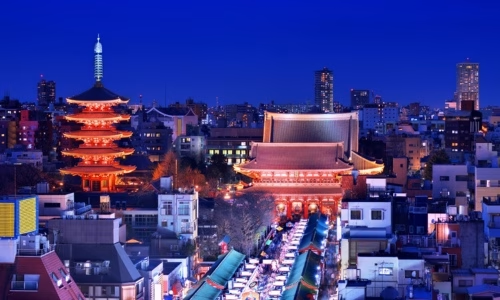


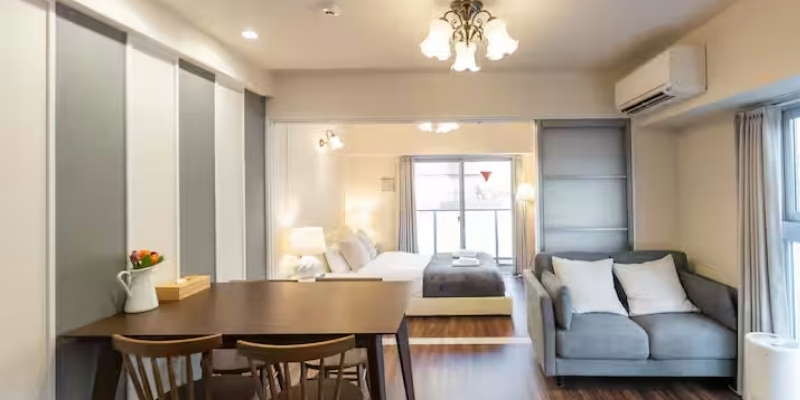

Leave a Reply